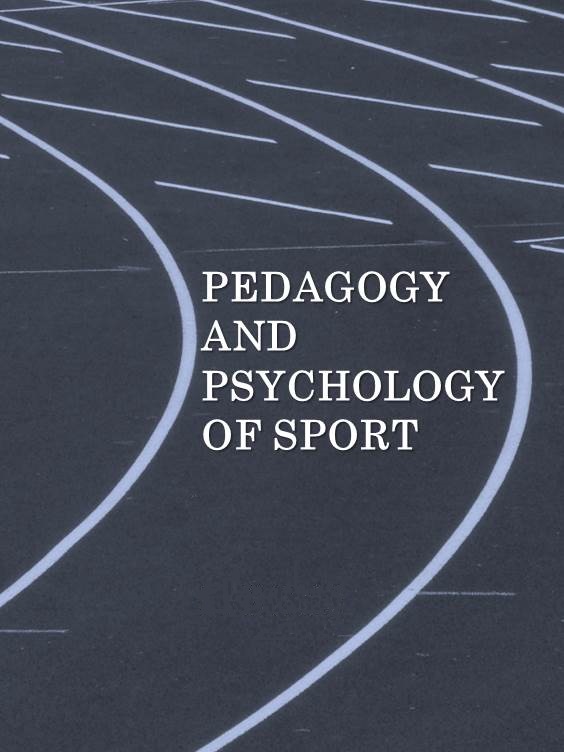Habitual constipation in children as a challenge in the physiotherapist’s practice
DOI:
https://doi.org/10.12775/PPS.2020.06.03.007Keywords
children, physiotherapist’s practiceAbstract
Stool constipation, according to the opinion of GPs, pediatrics and pediatric gastroenterology specialists, is one of the most common ailments among the youngest patients. The incidence of constipation varies and depends on many factors, mainly environmental, sociological and economic ones. It also depends on the gender and age of the child. It is estimated that up to 10% of the developmental age population suffers from chronic constipation. The above-mentioned ailment is most common in children from 2 to 4 years old and is slightly more common in boys than in girls. In 90–95% of cases, constipation develops on an idiopathic functional basis [1-4]. Habitual constipation in children is a very serious clinical problem because it prevents the patient from proper functioning, and thus contributes to a reduction in life quality and lowers self-esteem. In the international literature, issues related to physiotherapeutic treatment of habitual constipation appear quite rarely. Nowadays, there has been a significant increase in the interest in improving the quality of life in the youngest patients. An attempt to treat functional constipation in children should be made at the level of primary care, including comprehensive treatment and physiotherapy.References
Czerwionka-Szaflarska M., Romańczuk B. ‘’Postępowanie w zaparciu
czynnościowym stolca u dzieci i młodzieży’’. Forum Medycyny Rodzinnej 2008; 2, 5: 349–357.
Hyman P.E., Milla P.J., Benninga M.A. et all. ‘’Childhood functional gastrointestinal disorders: neonate/ toddler’’. Gastroenterology 2006; 130: 1519–1526.
Rasquin A., di Lorenzo C., Forbes D et all. ‘’Childhood functional gastrointestinal disorders:
child/adolescent’’. Gastroenterology 2006; 130: 1527–1537.
Baker S.S., Liptak G.S., Colletti R.B. et all. ‘’Evaluation and treatment of constipation in infants
and children: recommendations of the North American Society for Pediatric Gastroenterology,
Hepatology and Nutrition’’. J. Pediatr. Gastroenterol. Nutr. 2006; 43: 1–13.
Jończyk-Potoczna K., , Iwona Ignyś i., Marian Krawczyński M. ‘’Zaparcia u dzieci’’. Nowa Pediatria. 2003; 2, 133-138.
Mierzwa G., Czerwionka-Szaflarska M., Bała G. ‘’Ocena skuteczności ćwiczeń biofeedback u dzieci i młodzieży z zaparciami i (lub) z zanieczyszczaniem się stolcem — wstępne wyniki badań własnych’’. Pediatr. Współcz. 2006; 8 (1): 17–20.
Pashankar D.S.: ‘’Childhood constipation: evaluation and management’’. Clin. Colon Rectal Surg. 2005; 18: 120–127.
Malczyk Ż., Anna Jarzumbek A., Kwiecień J. i wsp. ‘’Praktyczne aspekty leczenia zaparć stolca u dzieci’’. Pediatr Med Rodz 2014: 10, 1: 55–60.
Gębska M., Wojciechowska A., Weber-Nowakowska K. ‘’Możliwości wykorzystania treningu biofeedback w fizjoterapii’’ . Acta Balneologica 2013: 15, 4, 134: 293-296.
Brazzelli M., Griffiths P.: ‘’Behavioural and cognitive interventions with or without other treatments for defaecation disorders in children’’. Cochrane Database Syst. Rev. 2001; (4): CD002240.
Strzyżewska R. i wsp.: ‘’Psychologiczne aspekty u dzieci z zaparciami i popuszczaniem stolca’’. Ped. Prak. 1999; 7(1):77-83.
Sullivan P.B.: ‘’Pediatricians, approach to constipation’’. Curr. Paediatr. 1996; 6 (2):97-100.
Reich M., Iwańczak B. ‘’Analiza najczęstszych przyczyn i objawów przewlekłych zaparć u dzieci’’. Przegląd Gastroenterologiczny 2014; 5, 6: 349–355.
Sitek D. ‘’Psychoterapia 8-letniego chłopca z ciężkimi nawykowymi zaparciami’’. Psychoterapia 2008; 2, 145: 55–61.
Loening-Baucke V. Prevalence, ‘’Symptoms and outcome of constipation in infants and toddlers’’. J Pediatr 2005; 146: 359-63.
Rubin G, Dale A. ‘’Chronic constipation in children’’. Br Med J 2006; 333: 1051-5.
Blachut K., Błoński W., Paradowski L.: ‘’Zaparcie. Przyczyny, diagnostyka, leczenie’’. Gastroenter. Pol. 2004, 11(2): 171-180.
Gibas-Dorna M., Piątek J. ‘’Zaparcia czynnościowe u dzieci - ocena i postępowanie’’. Prz Gastroenterol 2014; 9 (4): 194–199.
Zyss T. ‘’Stymulacja nerwu błędnego w terapii depresji – opis metody i kilka krytycznych uwag’’. Psychiatria Polska 2010, 44, 1, 71–88.
Mu Q., Bohning DE., Nahas Z., et all. ‘’Acute vagus nerve stimulation using different pulse widths
produces varying brain effects’’. Biol. Psychiatry 2004; 55 (8): 816–825.
Yuan H., Silberstein SD. ‘’Stymulacja nerwu błędnego i nerwu błędnego, kompleksowy przegląd: część I’’. EPub, 2016; 56 (1): 71-8.
Yuan H., Silberstein SD. ‘’Stymulacja nerwu błędnego i nerwu błędnego, kompleksowy przegląd: część II’’. EPub, 2016; 56 (2): 259-66.
Zalewski P., Słomiński K., Klawe J., Tafił-Kławe M. ‘’Ocena czynnościowa autonomicznego układu nerwowego z użyciem systemu Task Force Monitor’’. Acta Bio-Optica et Informatica Medica. 2008; 14,3: 228-234.
Simmonds N., Miller P., Gemmell H. ‘’Theoretical framework of the role of fascia in manual therapy’’. J Bodyw Mov Ther. 2012; 16 (1): 83-93.
Gilchrist R: Podstawy terapii czaszkowo-krzyżowej. Ujęcie biodynamiczne. 1st ed.(2013), Virgo, Warszawa.
Miszewski WJ, Miszewska A: ‘’Nowoczesne metody fizjoterapii – terapia czaszkowo-krzyżowa’’. Med Rodz 2014; 3: 141–146.
Sommerfeld P, Kaider A, Klein P: ‘’Inter- and intraexaminer reliability in palpation of the primary respiratory mechanism within the cranial concept.” Man Ther 2004; 9: 22–29.
Hawk C., Schneider M., Ferrance RJ et al.: ‘’Best practices recommendations for chiropractic care for infants, children, and adolescents: results of a consensus process’’. J Manipulative Physiol Ther 2009; 32: 639–647.
Hawk C., Schneider MJ., Vallone S. et al.: ‘’Best practices for chiropractic care of children: a consensus update’’. J Manipulative Physiol Ther 2016; 39: 158–168.
Own material and research.
Downloads
Published
How to Cite
Issue
Section
License
The periodical offers access to content in the Open Access system under the Creative Commons Attribution-NonCommercial-ShareAlike 4.0
Stats
Number of views and downloads: 770
Number of citations: 0



